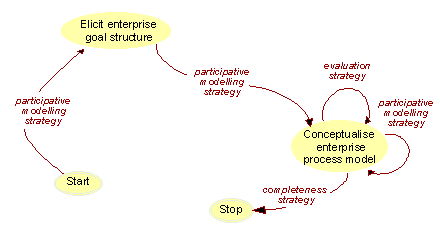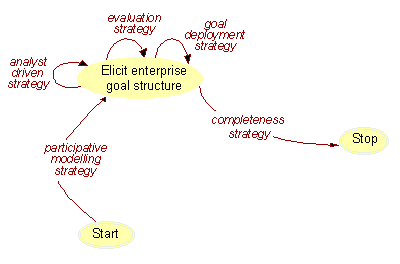| T1
: Elicit Future Goal Structure from
Start following Participative
Modelling Strategy
T2 : Conceptualise Alternative BPM from Future Goal Structure following Participative Modelling Strategy T3 : Conceptualise Most Suitable BPM from Alternative BPM Scenaria following Evaluation Strategy T4 : Conceptualise Future BPM from Selected BPM Scenario following Participative Modelling Strategy T5 : Stop from Future BPM following Completeness Strategy |
 |
|
Method factors
|



